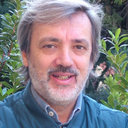Sleepwalking and other ambulatory behaviours during sleep.
Słowa kluczowe
Abstrakcyjny
Different pathological conditions may lead to somnambulic automatisms arising from nocturnal sleep. Video polysomnography represents the diagnostic tool but, due to the difficulty of capturing complex episodes in the sleep laboratory, audio-video recordings at home of the episodes may help in the differential diagnosis also. Sleepwalking is a disorder of arousal in which the subject arises from deep sleep, even displaying long complex behaviour, including leaving the bed and walking, with memory impairment of the event. Disordered arousal mechanisms with an inability of the brain to fully awaken from slow-wave sleep are thought to lead to these motor automatisms. REM sleep behaviour disorders begin during REM sleep and are accompanied by features of REM sleep. The motor behaviour may be violent and injurious to the patient and/or bed partner. In some patients, however, the behaviour may be similar to that observed in sleepwalking and some patients have an overlap syndrome. In nocturnal frontal lobe epilepsy in particular, and in complex partial seizures in general, stereotypic and repetitive motor attacks may recur, at any time, on the same night and on different nights, with a continuum between minimal or minor attacks and major or prolonged episodes up to agitated epileptic nocturnal wanderings.


